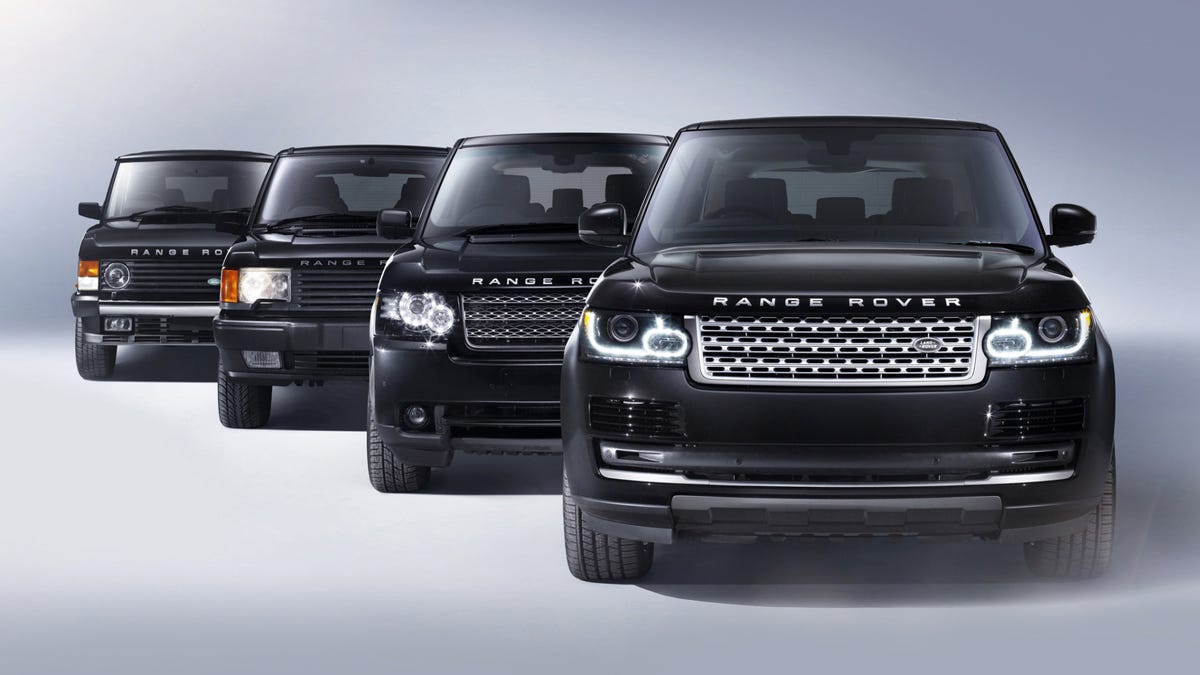Design Council: Range Rover
Eric Gallina takes us through the many faces of the most capable luxury ride on the planet.

Land Rover vehicles are some of the most distinctive vehicles in the world today, and the Range Rover is probably the most iconic. Comfortable and capable, the fact that it has seen only four different model iterations since it launched 42 years ago signifies just how well-conceived the original vehicle was.
Devised by engineer Spen King, the first Range Rover was actually created as an answer to the Ford Bronco and Jeep Wagoneer being developed in the U.S.
"The idea was to combine the comfort and on-road ability of a Rover saloon with the off-road ability of a Land Rover," King said before his death in 2010. "It certainly wasn't a luxury vehicle, at least not initially."
Rover's previous attempts at creating this new product had been met with some internal resistance, but in 1967 King revealed a mockup that he'd developed with fellow engineer Gordon Bashford; it was well received.
Chief designer David Bache was charged with redesigning King's temporary cloak, but in the end he merely fine-tuned certain areas, leaving the design largely untouched.
A beautifully simple piece of design, the original Range Rover even secured a place at a modern art exhibition in the Louvre when it launched. Everything was there for a reason, and that reason was function.
King sought to give the driver good visibility and created a large glasshouse all around the cabin. The roof was held up by thin A-pillars, and details like the vertical door handles and exposed door hinges and fuel cap gave it a utilitarian appearance. The interior could even be hosed clean.
But that would soon change. Subtle evolutions of the original design took place over the next two decades, the most obvious being the introduction of a four-door model, and a front grille with horizontal vanes to enhance width and addition of blacked-out A- and D-pillars, which gave the roof a floating look. Inside the models gained carpeting, leather seats, and wood trim for a more luxurious feel.
The design otherwise soldiered on until the second generation arrived in 1994. Christened the P38a, after the building in which it was built, it was an evolutionary design.
More rounded and refined, this model still retained its predecessor's distinctive design cues. The clamshell bonnet, undercut shoulder line, and large glasshouse remained, though it had been massaged and modernized.
The interior included a range of creature comforts typically found on luxury saloons of the time, and the vehicle was increasingly being bought as a status symbol by the wealthy, much to King's well-publicized aversion.
Eight years later the L322 model arrived, and, like the P38, it continued to retain the characteristic proportions: short front and rear overhangs and definitive design elements of its predecessor. The front and rear lamps returned to the round shapes of the originals, though encased in tall external housings.
The interior was even more lavishly appointed, and in later models technological advancements such as the instrument cluster's TFT display and Dual View monitor also adorned the cabin.
With this latest generation of Land Rover's iconic product, design director Gerry McGovern wanted to "build on the strength" of its predecessors but chose to tread lightly.
"We wanted to give it more feel but there's a limit," McGovern said at the car's launch in Morocco. "Take it too far and you're in danger of diluting that DNA, but if you don't take it far enough you end up being retrospective."
And so this fourth generation features the most significant changes. Its proportions are more contemporary, rendering the profile more elegant through a steeply angled windscreen, higher waistline, and rearward-sloping roofline, which is slightly lower than its predecessor's.
The once tall glasshouse is narrower, a trait continued through its slimmer headlamps and grille shape, which takes a page from the Evoque. There is a fresh interpretation of the classic design elements, which form an altogether more modern, aerodynamic, and familial package.
"Most of these things are done to not only make it more desirable but to make it more beneficial from an efficiency standpoint," McGovern said.
More visual weight is brought rearward to give the car more poised stance, and the wheelbase has been lengthened to improve access to the cabin. The execution of the interior design has also taken Range Rover to new levels of quality and refinement, with switchgear having been reduced by 50 percent.
"I don't like using the term iconic because I feel that it's used too liberally," McGovern said. "But I do think that it warrants iconic status. The design is so distinctive."

